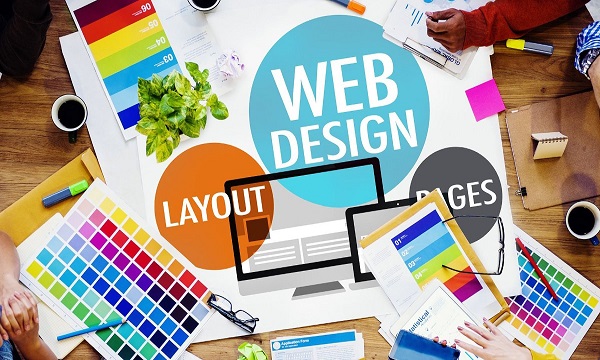Web Designing

Web designing is the process of creating visually appealing, functional, and user-friendly websites. It involves a combination of graphic design, user experience (UX) design, and interface design. Web designers aim to create sites that not only look good but also offer a seamless user experience across different devices and browsers. Key components include layout, color schemes, typography, and imagery, which all contribute to the overall aesthetics and usability of a site.
Why is Web Designing Important?
First Impressions Matter: Your website is often the first interaction potential customers have with your brand. A well-designed website can make a positive first impression and encourage users to explore further.
Enhances User Experience: Good web design ensures that visitors can easily navigate the site, find the information they need, and have a pleasant experience. This can lead to higher engagement and lower bounce rates.
Builds Credibility: A professional and aesthetically pleasing website builds trust and credibility with your audience. Users are more likely to trust and engage with a site that looks polished and well-maintained.
Supports SEO Efforts: Effective web design includes SEO best practices, such as mobile responsiveness, fast loading times, and proper HTML tagging. This can improve your site’s search engine rankings and drive organic traffic.
Improves Conversion Rates: A user-friendly website with clear calls-to-action (CTAs) can guide visitors toward desired actions, such as making a purchase, signing up for a newsletter, or contacting your business.
Key Components of Web Designing
Layout and Structure: The layout is the foundation of your website. It involves organizing content in a clear, logical manner. A well-structured layout enhances usability and ensures that users can find what they’re looking for quickly and easily.
Color Scheme: Color plays a crucial role in web design. It affects the mood and perception of your website. Choose a color scheme that aligns with your brand identity and appeals to your target audience.
Typography: The choice of fonts and text styles can significantly impact readability and user experience. Select fonts that are easy to read and consistent with your brand’s tone.
Imagery and Graphics: High-quality images, icons, and graphics can make your website more visually appealing and engaging. Ensure that images are optimized for fast loading times.
Navigation: Easy-to-use navigation is essential for a positive user experience. Use clear labels, logical menu structures, and intuitive navigation paths to help users find their way around your site.
Responsive Design: With the increasing use of mobile devices, responsive design is a must. Ensure your website looks and functions well on all screen sizes, from desktops to smartphones.
Call-to-Actions (CTAs): Effective CTAs guide users toward taking specific actions, such as signing up for a newsletter, making a purchase, or downloading a resource. Make sure your CTAs are clear, compelling, and prominently displayed.
Loading Speed: Fast loading times are critical for retaining visitors. Optimize images, use efficient coding practices, and leverage caching to improve your site’s speed.
Best Practices for Web Designing
User-Centered Design: Always design with the user in mind. Conduct user research and usability testing to understand your audience’s needs and preferences.
Consistency: Maintain consistency in design elements, such as colors, fonts, and navigation, across all pages of your site. This creates a cohesive and professional look.
Whitespace: Use whitespace effectively to create a clean and uncluttered design. Whitespace helps guide users’ attention and improves readability.
Accessibility: Design your website to be accessible to all users, including those with disabilities. Follow web accessibility guidelines, such as providing alt text for images and ensuring keyboard navigability.
Content Quality: High-quality content is just as important as good design. Ensure your content is well-written, relevant, and valuable to your audience.
SEO-Friendly Design: Incorporate SEO best practices into your web design, such as using proper HTML tags, creating a logical URL structure, and optimizing images.
Feedback Mechanisms: Provide ways for users to give feedback, such as contact forms or surveys. Use this feedback to continually improve your website.
Emerging Trends in Web Designing
Minimalist Design: Minimalism continues to be a popular trend, focusing on simplicity and functionality. This design approach emphasizes clean layouts, ample whitespace, and essential elements only.
Dark Mode: Offering a dark mode option can enhance user experience, reduce eye strain, and save battery life on mobile devices.
Micro-Interactions: Small animations or design elements that respond to user actions, such as hover effects or button animations, can make your website more engaging.
Voice User Interface (VUI): With the rise of voice search and virtual assistants, designing for voice interactions is becoming increasingly important.
3D Elements: Integrating 3D graphics and

